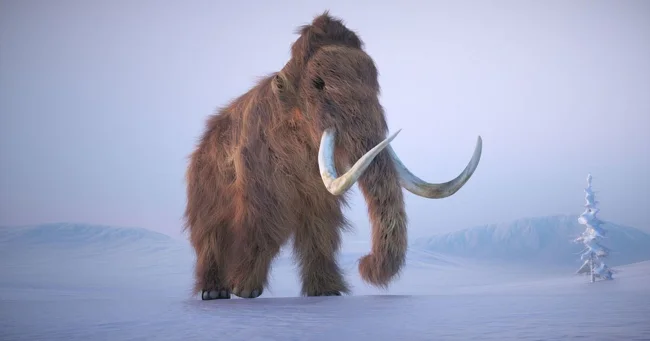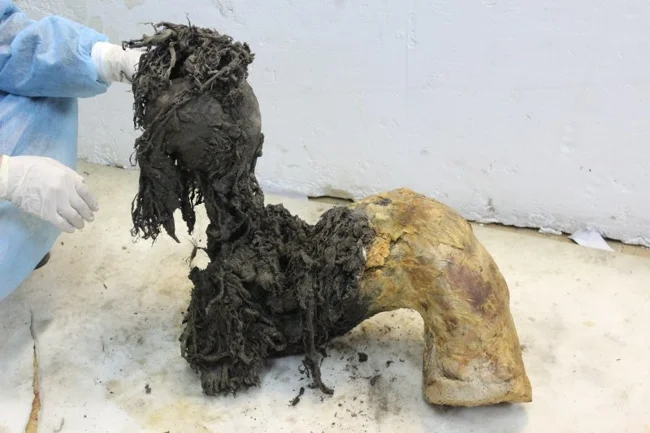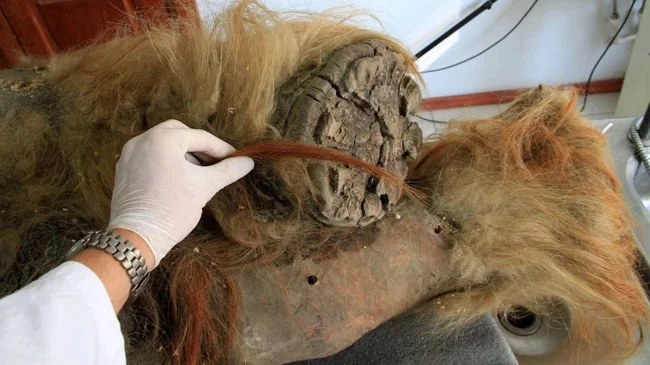Scientists have decoded the RNA of a 40,000-year-old mammoth for the first time (5 photos + 1 video)
Swedish and Danish scientists have successfully isolated and sequenced the RNA molecules of giant Ice Age animals for the first time. These ancient gene sequences were discovered in the tissue of a mammoth preserved in Siberian permafrost for nearly 40,000 years. 
Ribonucleic acid (RNA) is a key molecule in cells, involved in the storage, transmission, and implementation of genetic information.
Experts believe their achievement will help bring back extinct animals such as the mammoth, dodo, and Tasmanian tiger.
"Our methods and achievements could form the basis for saving some animal species from extinction," Dr. Emilio Marmol of the Globe Institute in Copenhagen told the Daily Mail.
"Scientists need to study the biology of extinct species more deeply. This not only provides information about the location of genes in the genome and their mutations compared to modern relatives, but also about how these genes functioned, were regulated, and interacted. DNA doesn't provide the full picture; RNA is needed for that." 
The woolly mammoth, a relative of the elephant, is one of the most famous extinct animals. This large mammal reached four meters in height and weighed about six tons. It inhabited Northern Europe, Asia, and North America during the last Ice Age and disappeared about 4,000 years ago.
These animals coexisted with ancient humans, who hunted them for food and made weapons and art from their bones and tusks.
Why mammoths disappeared remains a mystery. The role of human hunting and climate change is debated.
Scientists have long studied mammoth DNA. They wanted to learn more about their genomes and evolution. But RNA, which reveals which genes are active, remained unavailable. 
The study involved samples from the "exceptionally well-preserved" frozen remains of 10 woolly mammoths from the Late Pleistocene, one of which ("Yuka") was 39,000 years old.
Only three samples contained RNA sequences that could be confidently attributed to mammoths.
Dr. Marmol explained that mammoths buried in permafrost bear traces of contamination.
"These are primarily bacteria that grew on the decomposing carcass before it froze, as well as modern DNA and RNA contamination from people who handled the samples." 
Researchers were able to detect RNA molecules in a sample obtained from Yuki—the oldest RNA ever sequenced.
These molecules encoded proteins that perform key functions in muscle contraction and metabolic regulation during stress.
The team discovered that the young mammoth had experienced stress before its death, possibly due to predation.
Furthermore, RNA molecules known as microRNAs, which regulate gene activity, were found in the samples.
"These microRNAs are completely new to science. They are likely expressed only in mammoths. We found no evidence of their presence in the tissues of modern elephants," Dr. Marmol told the Daily Mail. 
"Such work could radically change our understanding of extinct megafauna and other species, revealing many unexplored aspects of biology that have remained frozen in time until now," the expert concluded.






























